Albyn Line, Branch Line and Westoll Line
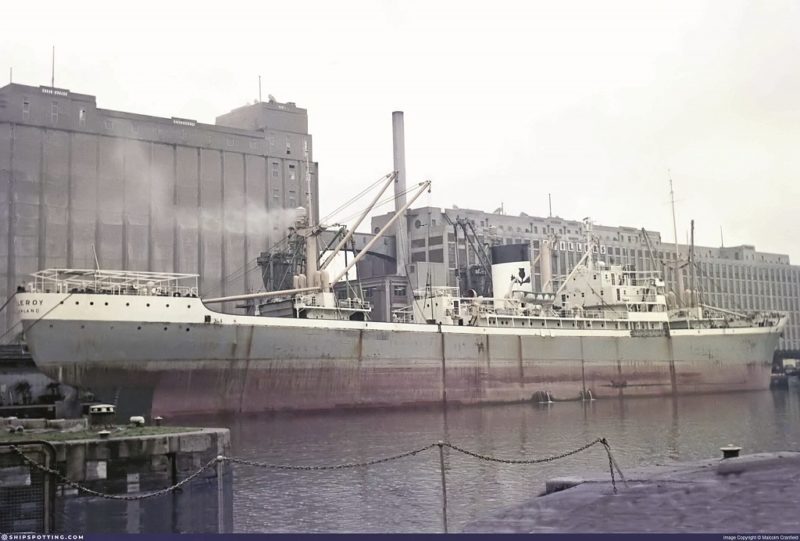
Sunderland was at one time known as the ‘The Greatest Shipbuilding River in the U.K.’ due to its huge output of many types of cargo ships. Today, to the long list of the shipbuilding, glass, chemicals, precision engineering and other industries one must add volume car production. The Nissan Car Plant has a huge output per year of over 700,000 petrol and electric powered cars on two production lines as the largest U.K. car maker, with over 6,500 employees and another 60,000 employees in the supply chain of components. A new car rolls off each production line every two minutes, with over ten million cars having been made in the 35 years since production began in 1986. This plant is very secure for the long term, with 75% of production exported from the Tyne as zero tariff exports to the European Union. New trade rules had to be implemented when the U.K. left the EU to maintain the zero tariff, with at least 55% of each car made either from U.K. or EU parts.
Sunderland had another first in 1887 when the first Sailor’s Union was formed as the National Amalgamated Sailors and Firemens Union by Havelock Wilson. This later became the National Union of Seamen (NUS), which today has become the Rail, Maritime & Transport Workers Union (RMT).
Sunderland had a number of medium sized tramp ship companies, of which three are under review in this article. Albyn Line existed from 1901 to 1966 with a total of 18 owned tramp ships, Branch Line was the common name for the Ritson family ships, who owned sailing ships for some time before setting up the Nautilus Steam Ship Company, which owned 32 tramp ships and managed another five ships between 1881 and 1931. Westoll Line was managed by the energetic James Westoll and his son, also named James Westoll, and owned 100 tramp ships between 1868 and 1959 under Westoll Steamships Ltd. and other companies.

ALBYN LINE
Alba has been the Gaelic name of Scotland since the ninth century, and Albyn Line Ltd. was the name chosen by the Scot who was the first chairman of this shipping company, Sir William Allan (1837-1903). Walter B. Allan and William Black were the local managing directors based in Sunderland as Allan, Black & Company, formed in 1901. Black & Company had managed barques trading to the Mediterranean and Black Sea since the 1850s. Sir William Allan had been born in Dundee, and after a brilliant engineering career working around the world, he set up the Scotia Engineering Works at Scotia Quay in Sunderland in 1887, with a workforce that eventually numbered one thousand. Sir William died at his home in Mowbray Road, Sunderland on 28th December 1903 of heart failure, and was succeeded as Chairman by Sir James Joicey, owner of a vast colliery empire.
‘Thistle’ names were used from the outset for all of the tramp ships, as the purple flower of the thistle is the emblem of Scotland and means nobility and graciousness, and was the badge of the Stuart Family of Scotland including Mary Queen of Scots, who had a thistle carved on her tomb.
The meaning of some of the names of the tramp ships are:-
Thistledhu Black thistle
Thistleroy Red Thistle
Thistleros Rose Thistle
Thistledowne Fluffy down attached to thistle seeds enabling them to be blown on the wind
Thistledhu of 4,026 grt was the first tramp ship of the company when launched on 29th October 1901 and completed in January 1902 by Irvines Shipbuilding & Dry Dock Co. Ltd. at West Hartlepool, with a triple expansion steam reciprocating engine by Richardsons, Westgarth & Co. Ltd. In December 1901, she was given her first guarantee dry docking and survey prior to her completion. She was used for trading in the ‘Eternal Triangle’ route of Tyne or South Wales coal out to the Mediterranean, and then a ballast voyage through the Dardanelles to the Black Sea ports of Odessa, Nicolaieff or Mariupol to load grain for London or the Continent. She also used to carry coal to Brazilian or Argentinean ports, and load grain homewards in the River Parana ports, or in the coal out and cotton or grain homewards trade to the Gulf of Mexico.
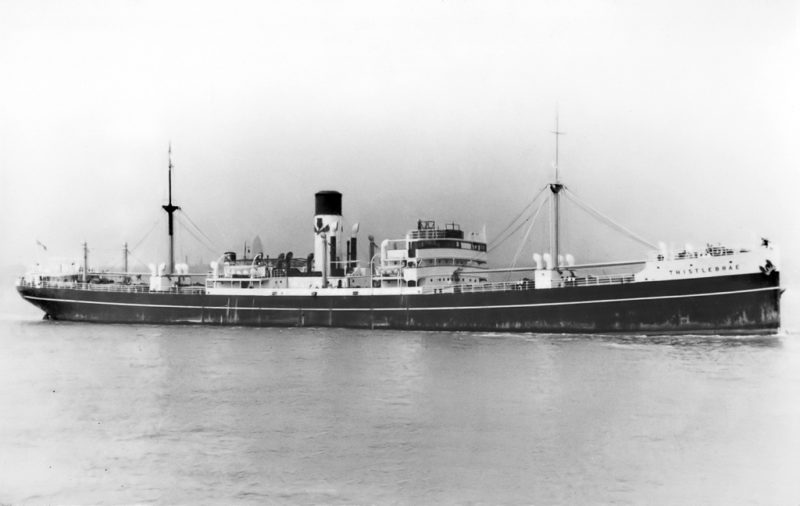
An exact sister followed in 1902 from the same yard as Thistleroy, launched on 29th March 1902 and completed in June 1902. She sailed from the Tyne with coal on New Year’s Day 1910 under Capt. Sprouil for Port Adelaide, where she arrived on 18th February 1910 and then loaded grain for the Eastern States of the U.S.A. However, she was wrecked on 28th December 1911 on the Cape Lookout Shoal in North Carolina. Thistlemor of 4,008 grt was launched on 25th April 1906 at the Stockton yard of Craig, Taylor & Co. Ltd., but she foundered in Barnstaple Bay in Devon on 3rd December 1909 with the loss of 21 lives. Thistleban of 1910 and Thistleard of 1912, both from the Craig, Taylor yard, and Thistletor of 1910 from the Irvine yard made up for these losses. This gave a fleet of four tramp ships on the outbreak of World War I, of which Thistletor of 7,600 dwt was detained by the Turks in the Bosphorus for the duration of the war, and the remaining three were lost to enemy action:-
Thistleban Mined and sunk near Alexandria on 23rd December 1916
Thistleard Torpedoed and sunk by U-82 on 24th April 1917 135 miles WNW of Tory Island while on a voyage from Tocopilla and Norfolk (Va) to Glasgow with nitrates
Thistledhu Torpedoed and sunk by U-82 on 18th June 1917 while on a voyage from Iquique to the U.K. with nitrates, 4 lives lost
In 1919, after the release of Thistletor from detainment at Istanbul, she traded alone with the company income supplemented by the profits of its shipping agency business. Two tramps, Thistleben and Thistleros, were completed in 1924, and a further four of 4,760 grt, 8,500 dwt and 500,000 cubic feet (grain) or 460,000 cubic feet (bale) were completed at Sunderland in 1928/29 as Thistlebrae, Thistleford, Thistlegarth and Thistleglen. Thistleben was sunk in collision with the American steamer Hanley on 4th October 1928 off the Florida coast, and her sister Thistleros was sold in the same year to Mitsui Busan K.K. of Kobe to raise cash to pay for the new quartet. The tragedy of this new quartet is that they soon went into lay up when trade rates plummeted to unheard of low rates from late 1929. Thistetor was sold to Plovidba Rad of Jugoslavia in 1930 and renamed Rad, leaving the company directors the very hard task to find profitable work, or keep them laid up, for four new tramps.
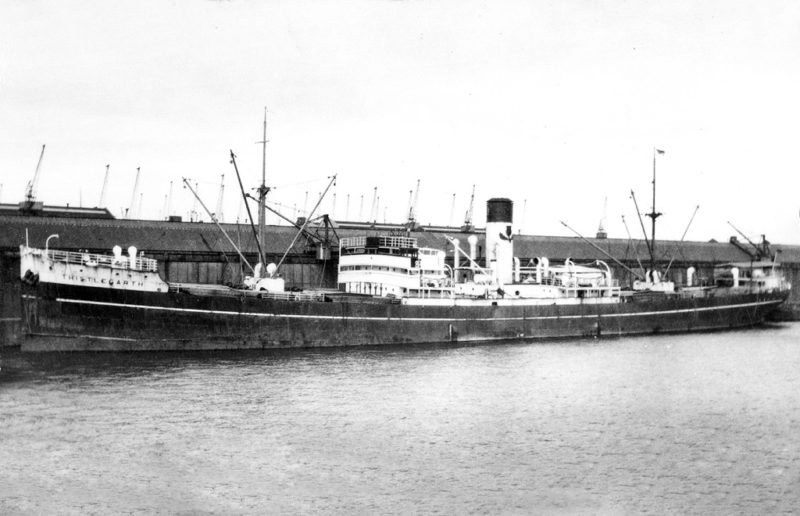
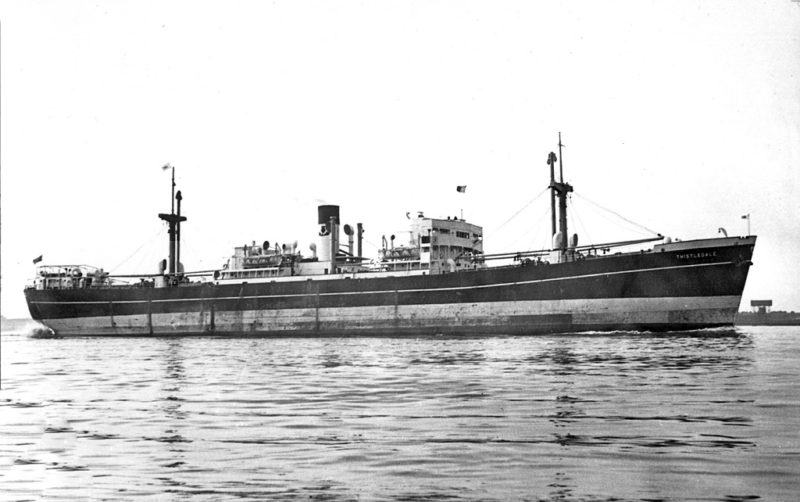
The pattern of World War I was repeated again in World War II for Albyn Line, with a quartet of tramps afloat at the start of the war. Three new triple expansion steam powered tramps were completed at Sunderland yards during the war as Thistlegorm, Thistlemuir and Thistledale. The losses in World War II were:-
Thistlebrae Sailed from Methil for Trondheim on 9th March 1940, in collision there on 4th April and put into dry dock. Seized at Trondheim by German forces on 9th April with 33 crew as prisoners of war and renamed Altkirch and later renamed Inster on 5th January 1944, and sunk by British Beaufighter aircraft in Kiel Bay off Laboe on 3rd May 1945
Thistlegarth Torpedoed and sunk by U-103 on 15th October 1940 while on a voyage in ballast from Scapa Flow to Father Point on the St. Lawrence on Admiralty requisition, 29 crew and one gunner were lost
Thistleglen Torpedoed and sunk by U-85 on 10th September 1941 while on a voyage from New York to Glasgow with 5,200 tons of steel and 2,400 tons of pig iron, 3 lives lost
Thistlegorm Bombed by German aircraft and sunk at ‘safe’ anchorage ‘F’ in the Strait of Gubal in the Gulf of Suez on 6th October 1941 with the loss of nine lives
Thistlegorm made only three loaded voyages before she was lost, the first was with a cargo of steel rails and coils and aircraft parts from ports in the U.S.A. to the U.K., the second was homeward from the Plate with grain for the U.K., and the third was with a cargo of sugar and rum from the West Indies to the U.K. She sailed on her fourth voyage from Glasgow on 2nd June 1941 for Alexandria via South Africa with armoured vehicles, trucks and lorries, motorcycles, Bren guns, cases of ammunition and rifles, radio equipment, Wellington boots, aircraft parts, railway wagons and two Stanier Class 8F steam locomotives of London, Midland & Scottish Railway (LMS) as deck cargo. She was equipped at the stern with a 4.7 inch anti-aircraft gun and a heavy calibre machine gun.
Capt. William Ellis and his crew of 39, supplemented by nine naval personnel to man the two guns on the stern, successfully arrived in the Gulf of Suez in September 1941, and were directed to the Gulf of Gupal to await orders to discharge her important war cargo. However, two Heinkel He 111 aircraft had been despatched from Crete to find and destroy a large troop transport that had recently arrived. The bombers failed to find a troopship, but instead discovered cargo ships in ‘F’ anchorage, and at 0130 hours on 6th October 1941 dropped two bombs on number four hold, which exploded with enormous force and set the ship on fire.
The ammunition stored in number four hold and other explosives in other holds blew up, tearing Thistlegorm in two sections, which sank in a ‘V’ shape. The anti-aircraft cruiser Carlisle was the nearest ship, and eyewitnesses saw her sink in less than a minute with the loss of four crew members and five naval gunners. The two big steam locomotives were blown overboard, one to each side, and the survivors were rescued by Carlisle. Capt. Ellis was awarded the OBE for his actions following the explosions, and Angus McLeay was awarded the George Medal and the Lloyd’s War Medal for Bravery at Sea for saving one of his fellow crewmen.
The French explorer and diver Jacques Cousteau discovered the wreck of Thistlegorm using information from local fishermen as well as a 1948 Admiralty chart showing the position of the wreck. The massive explosions had blown almost all of her ‘midships superstructure away, but divers were able to bring up motorcycles, the Captain’s safe and the ship’s bell. She lies at a depth of around 32 metres (100 feet) and the wreck now serves as an accessible recreational diving experience for tourists from the nearby resort of Sharm El Sheikh.
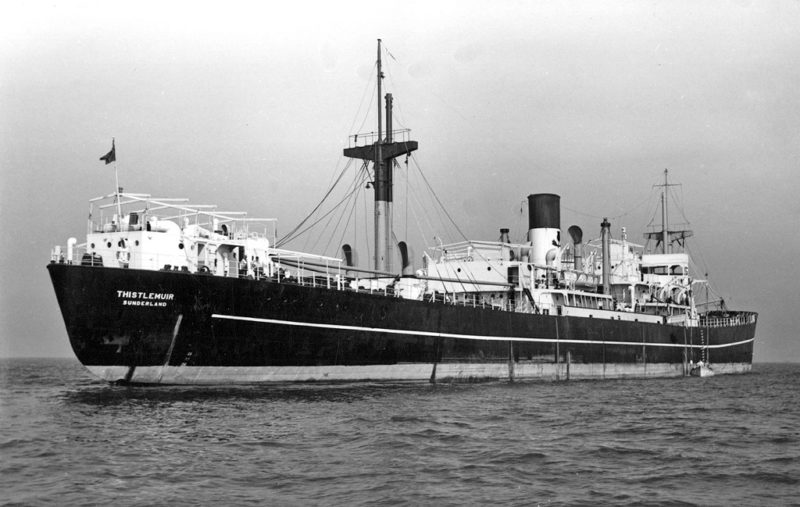
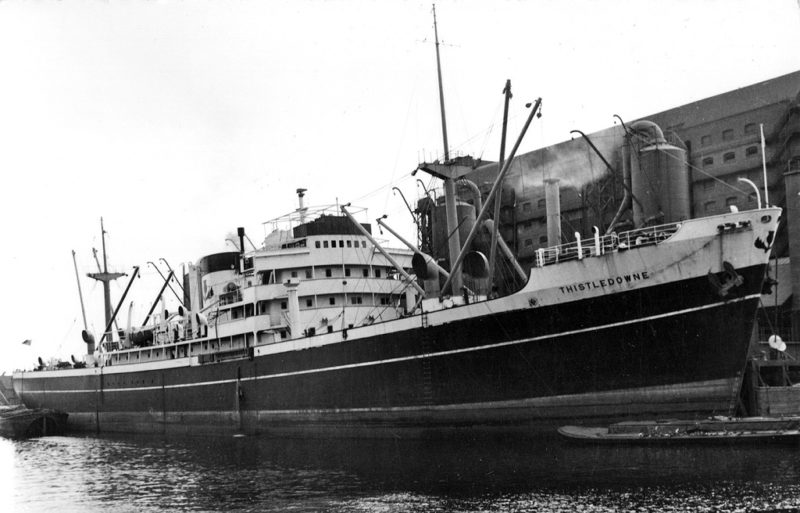
Post-war trading in the 1950s by Albyn Line directors Kenneth W. Black and Walter B. Allan was in the same worldwide trades as before, using the war-built types Thistledale and Thistlemuir, after Thistleford of 1928 had been sold to Greek owners in 1950 and renamed Archon Michael. She gave a dozen more years to her Greek owners before dragging her anchors in Egypt and grounding at Abu Zenima on 18th December 1962 and became a total loss.
Three new five hold motor tramps were then built between 1953 and 1960 by Sunderland shipbuilders for charter to liner companies as they had service speeds of 14 knots from powerful four cylinder 2SA Doxford diesels of 4,400 bhp
Name Charterers Built GRT
Thistledowne 1955/61 Port Curtis (Port Line) 1953 5,635
Thistledhu 1957/60 Kildare (Avenue Shipping Co) 1955 5,635
Thistleroy 1960/66 14 liner charter voyages 1960 7,919
Thistledowne had been launched on 22nd October 1952 at the North Sands yard of J. L. Thompson & Sons Ltd., and sailed on her maiden voyage under Capt. Dobson in ballast to load grain at Galveston for the U.K. on 6th March 1953. She often loaded grain at Montreal for Liverpool, grain on the River Parana in Argentina, phosphates at Boca Grande (Florida) for Portishead, or Dakar (Senegal) for Moji (Japan), or at Nauru Island in the Pacific for discharge in Australia. Thistledhu was launched on 6th May 1955 by the Strand yard of John Crown & Sons Ltd., and Thistleroy of 1960 was two feet longer and ten inches deeper than the first pair of the trio with dimensions of overall length 421.0 feet by beam of 59.5 feet and depth of 38.1 feet, with a loaded draft of 28.9 feet. The yard of J. L. Thompson & Sons Ltd. gave her a poop as well as topmasts, three large bridge windows, and she had two short kingposts in front of her bridge as part of her outfit of twelve cargo derricks.
The long charters voyages of both Thistledowne and Thistledhu to Australia and New Zealand included funnel changes of colour to Port Line colours of red with a black top and three narrow black rings, and to the bright Money, Wigram funnel colours of the Avenue Shipping Company. Thistledhu came off her Avenue Shipping Company charter in January 1961 and was then chartered by Nigerian National Line for a round voyage from Europe to West Africa and back. However, on her 14 short liner charters, Thistleroy kept her traditional black and white funnel colours of Albyn Line.
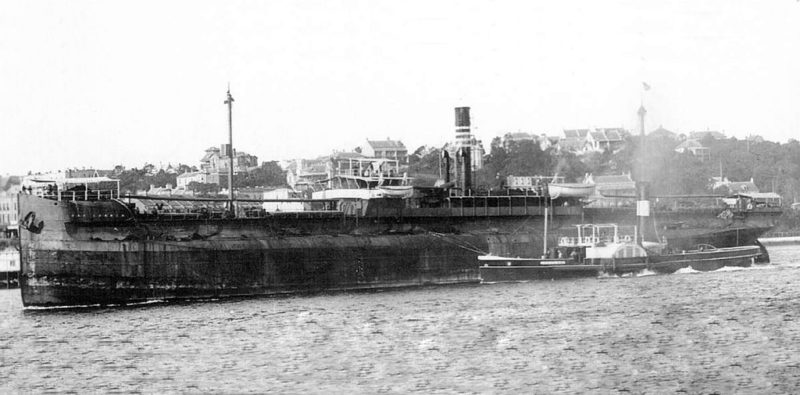
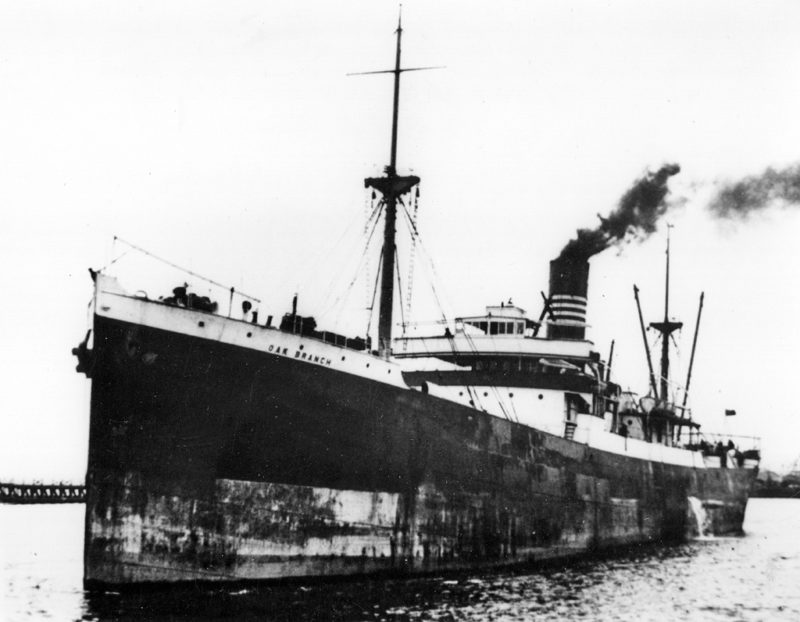
The Albyn Line of Sunderland, managed by Allan, Black & Co. Ltd. since formation in 1901, went into voluntary liquidation in July 1966, and was then acquired later in 1966 after 65 years of Sunderland ownership by Chapman & Willan Ltd. of Newcastle, together with their last trio of tramps in Thistleroy, Thistledhu and Thistledowne sporting their black and white funnels bearing a black thistle, and white houseflag bearing a black thistle. The price paid was £1.225 million, with Thistledowne as the oldest of the trio and made only one voyage for Chapman & Willan in February 1966 when she ballasted to Recife in Brazil to load sugar for London. She was then sold to Indian owners, who required a British registered vessel rather than the Bermudan registration of the Somerston Shipping Co. Ltd., so she was transferred to the ownership of the Carlton company of Newcastle just before her sale. Thistledhu was traded for two years of worldwide tramping for the company as Merton, while Thistleroy tramped for four years as Ingleton until sold in 1970 to Greek owners as Panetolikon but flew the Liberian flag. She was damaged by a collision in the Karnaphuli River while trading as Shabaan on 19th November 1983, and arrived at Chittagong on 28th March 1984 for breaking up after a 24 year career.
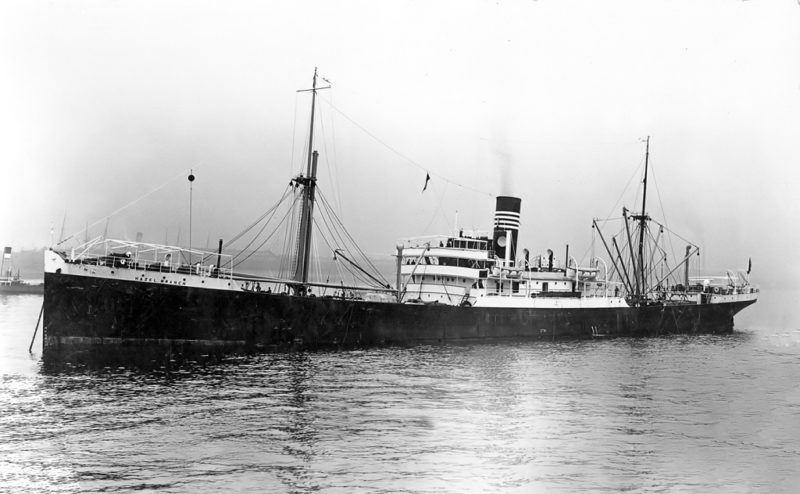
BRANCH LINE (NAUTILUS STEAM SHIPPING CO. Ltd.)
Francis Ritson (1824-1889) was born on 7th May 1824 in Sunderland to John Ritson and Lydia Jane Oliver. He had five brothers and half brothers, of which his half brother William Ritson became his business partner as F. & W. Ritson. He married twice, first to Jane Thompson in 1850, and then to Mary Mackenzie in 1867, with a total of nine children from the two marriages, of which the eldest, Frank William Ritson, later became the secretary of the Ritson steam ship business. Sailing ships were owned from the 1830s e.g. the wooden brig John Ritson of 551 grt built and registered on 23rd April 1868 to the Ritsons by George and John Mills of Southwick in Sunderland on dimensions of 143.6 feet by 29.5 feet by 18.2 feet. After a long career, she was sold to M. Jane of Barcelona and renamed Josefa Formosa.
Steam tramp shipping was entered on 21st March 1881 when the Nautilus Steam Shipping Company was formed by Francis & William Ritson, with Frank William Ritson as Secretary. The first ship delivered was Palm Branch of 1,716 grt from Bartram, Haswell & Company in August 1881, having been launched on 15th July 1881. She began a ‘Branch’ nomenclature of many types of tree, and the company was more commonly known as the Branch Line of Sunderland. Palm Branch traded for the Ritsons in the ‘Eternal Triangle’ trade route on the Black Sea for 13 years until sold to an Elsinore shipowner in Denmark and renamed Ophelia, and was wrecked in 1906 at Lemvig in Denmark while on a voyage from Marseille to Stettin with coke.
The similar Olive Branch of 1881 was lost in collision with Tudor Prince of the Prince Line fleet of Sir James Knott in the English Channel on 5th June 1885, and was followed by Myrtle Branch of 1883, Pine Branch of 1883, Cedar Branch of 1886, Olive Branch (2) of 1887, Maple Branch of 1888, Hazel Branch of 1889, and Laurel Branch of 1893 from Sunderland yards. The founder, Francis Ritson, had died at Brampton in Cumbria on 7th June 1889. Larger tramp ships were built for long worldwide trading, including seven Doxford ‘Turret’ types Oak Branch, Elm Branch of 1895, Vine Branch (ex Clan Shaw) of 1896, Orange Branch (ex Bullionist) of 1896, Almond Branch (ex Ashmore) of 1896, Lime Branch of 1902, and Poplar Branch of 1902. Lime Branch loaded a record cargo of 7,936 tons of coal in the Tyne and sailed on 11th August 1902 for San Francisco.
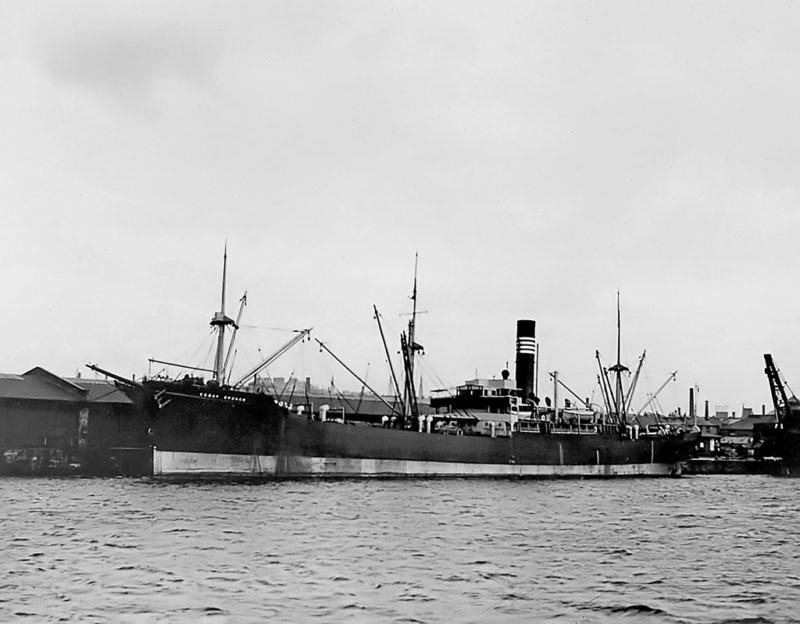
‘Turret’ ships were designed to save tonnage and money on exorbitant canal charges under the Suez Canal system of measurement. They had no sheer and an unusual ‘bulge’ either side of the hull, the top of which was known as the ‘Harbour deck’. Lime Branch and Polar Branch of 1901 had a large number of derricks on five twin goalpost masts to assist the loading and unloading of much liner general cargo on the West Coast South America trade.
Homeward cargoes of nitrates from Chile via the Magellan Strait were important, with Hazel Branch wrecked there on 12th November 1907 while on a voyage from Antofagasta with nitrates for Liverpool and Dunkirk. Another regular trade was sugar from the Javan port of Cheribon, and other bulk cargoes from Bombay, Shanghai and Singapore to Australian ports, together with a few passengers.
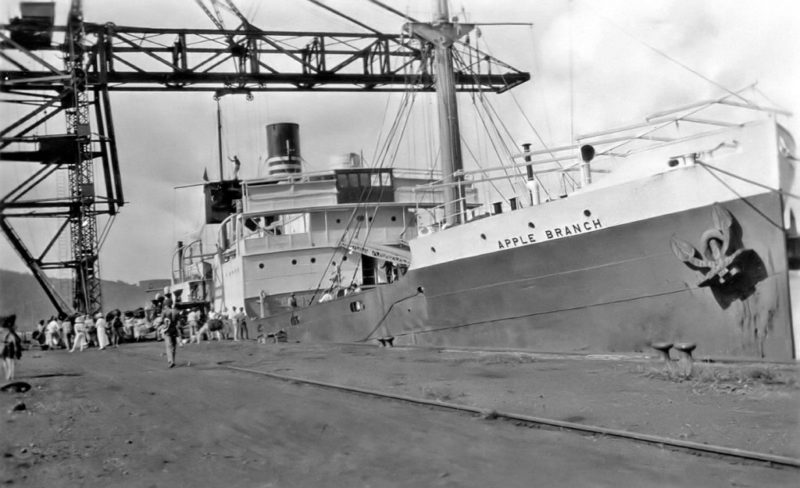

A MOVE INTO LINER SHIPPING
In 1899, Gulf Line Ltd. of Greenock was formed by the amalgamation of the Greenock Steamship Company and the Gulf Line Association of Greenock with a capital of £120,000. The Nautilus Steam Ship Co. Ltd. purchased all of the Gulf Line shares in 1906, after Sir Christopher Furness of Furness, Withy & Co. Ltd. acquired a controlling interest in Gulf Line shares in 1903. This West Coast of South America liner service to Ecuador, Peru and Chile from Glasgow, Liverpool and London had the following loading berths:-
Liverpool Alexandra Branch Dock, North Side 16 Shed, and Carriers Dock
Birkenhead East Float
Glasgow Number 5 berth, Queen’s Dock
London Millwall Dock
Tyne, Cardiff and Swansea were also used as outward loading ports if the manifest was for coal outwards. Furness, Withy & Co. Ltd. used ships on their own route to West Coast South America with names ending in ‘O’ e.g. Rapallo, Como, Lugano, Oristano, Caterino, Rossano, Salerno, Santeramo, Turino, Ariano, Castellano and Comino. In 1920, they had eight ships with names ending in ‘O’ on their own West Coast South America route, matched by an equal number of ships of the Nautilus Steam Ship Co. Ltd. with ‘Branch’ suffixes to their names.
Branch Line had a fleet of ten ships at the turn of the century, and this increased with the purchase of Isel Holme of 3,741 grt and renamed Myrtle Branch in 1907, and of Rangoon from the British & Burmese Steam Navigation Company of Glasgow (Paddy Henderson, managers) and renamed Palm Branch. The clipper bowed Cedar Branch of 3,554 grt was completed in 1910 by Bartram & Sons of South Dock in Sunderland, and at the end of some of her West Coast South American voyages would discharge and dry dock at Antwerp. The long bowsprit, tall funnel, three masts and a dozen derricks, and her full hull lines were evident in the photographs of that period. She survived World War I to return to the West Coast South American liner service, and arrived at Liverpool on 5th February 1921 from Valparaiso with a number of passengers disembarking. She was sold to A. Lusi Ltd. of London in 1932 and renamed Aenos, and was torpedoed and sunk by U-38 on 17th October 1940 as a straggler from convoy SC-7 from Sorel on the St. Lawrence to Manchester. October 1940 was a great hunting time for the U-boat wolf packs, with seven of them sinking sixteen Allied ships of 80,000 grt in just four days.
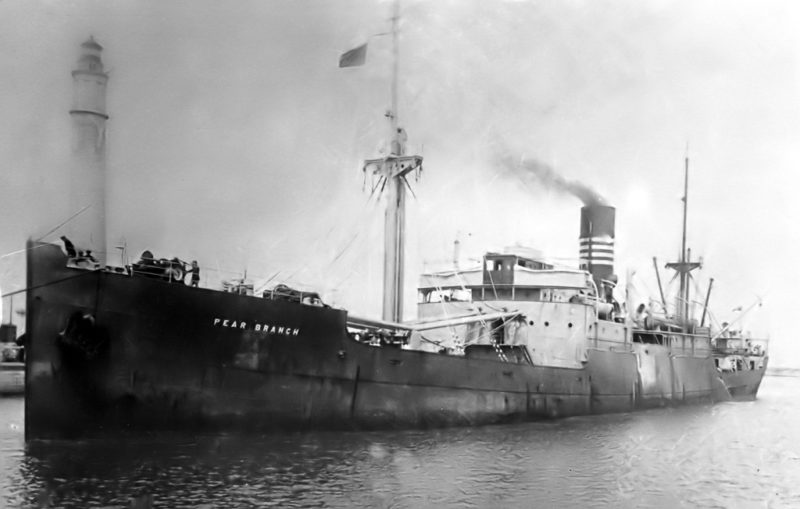
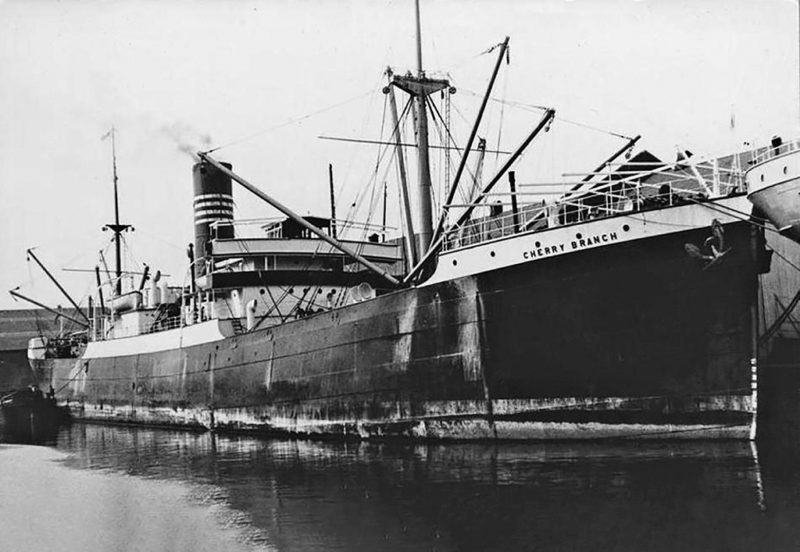
The company had lost seven ships during World War I:-
Maple Branch
ex Den of Mains purchased from Barrie & Son of Dundee on the last day of 1913, was captured and sunk on 3rd September 1914 by the German cruiser Karlsruhe near St. Pauls Rocks in the South Atlantic. She made three voyages for Ritson on the Gulf Line run from Liverpool to Buenos Aires, Valparaiso and Callao, and was on the outward voyage of the next one when she was stopped
Holly Branch
Captured and sunk by UB-39 on 1st January 1917 when off Ile de Bas while on a voyage from La Plata to Le Havre with a cargo of oats for horses

Vine Branch
Torpedoed and sunk by U-55 off South West Ireland on 6th April 1917 while on a voyage from Valparaiso to Liverpool with the loss of all hands, 44 lives
Olive Branch
Torpedoed, shelled and sunk by U-28 when 85 miles off the North Cape on 2nd September 1917 with a big cargo of munitions. The U-boat closed to the casualty but was too close when the ship exploded with such force that U-28 was also sunk
Almond Branch
Torpedoed and sunk by UB-57 on 27th November 1917 in the English Channel two miles SE of Dodman Point while on a voyage from London to Callao with general cargo
Myrtle Branch
Torpedoed and sunk by UB-73 off Inishtrahull while on a voyage from Newport News to the U.K., 15 lives lost
Willow Branch
Requisitioned by the Admiralty in January 1917 and converted to a ‘Q’ ship with hidden guns on her deck that were revealed when a U-boat was seen on the surface. She operated under the names of Britannia, Juggler, Vinetroe and Bombala. She was operating under the latter name off Cape Blanco off North West Africa on 24th April 1918 when she sank in a three-way fight with both U-153 and U154. This was a classic ‘Q’ ship battle with two well-armed U-boats, all 58 brave crew of Willow Branch were lost
Lime Branch
Nearly sank on 13th August 1917 when torpedoed by U-84 242 miles from Plymouth while on a voyage from Punta Arenas to London via Las Palmas for bunkers with sodium nitrate, cotton and cotton cake, oats and wool. Although seriously damaged, she continued her voyage up the English Channel and reached London, another torpedo having been fired by U84 that missed her. She was sold to Fisser und Von Dornum, Germany in 1925 and renamed Konsul Carl Fisser, and was broken up in 1933. Poplar Branch, her sister, was broken up in 1931
Purchased ships during World War I included two from Bell Brothers of Glasgow, with Bellorado renamed Olive Branch and lost on 2nd September 1917, and Bellgrano renamed as Hazel Branch. A further tramp was purchased from Charles Barrie of Dundee Den Line and was renamed Oak Branch. Berwen was purchased from W. & C. T. Jones of Cardiff and renamed Laurel Branch, and Oceana was purchased from Maclay & McIntyre of Glasgow and renamed Maple Branch.
Stanley Mackenzie Ritson, son of the founder Francis Ritson, and William Thompson were the directors of the company at the end of World War I, and had the difficult task of finding money to be put towards the cost of replacing war losses, the insurance money falling far short of the very high new ship prices in the boom market of 1919/20. However, it was a ‘bust’ market in 1922 when freight rates completely collapsed, but sisters Pine Branch and Plum Branch from the Jarrow yard of Palmers in 1921 of 4,786 grt and 8,500 dwt were the last new ships built for Branch Line.

This last pair were powered by a single steam turbine DR geared to a single screw to give a service speed of 10.5 knots. Plum Branch was launched first on 10th January 1921, and was followed by her sister two weeks later, with completion in the summer of 1921. They had dimensions of overall length of 398.6 feet, moulded beam of 53.9 feet, and moulded depth of 26.1 feet, and were given a black hull with a white fo’c’stle of length 42 feet, a white bridge deck of length 121 feet, and a white poop deck of length 37 feet. The steam driven winches and derricks were positioned around two tall masts at numbers 2 and 4 holds, with an enclosed navigating bridge.
The Branch Line of Sunderland thus had a fleet of thirteen ships in the summer of 1921 for use on the liner service to the West Coast of South America or on general tramping, and as war reparations for the war losses, Branch Line was given three German cargo-liners for management in 1919/21. These were Tasmania of 7,514 grt built for the German-Australien Line, Greiffenfels of 5,852 grt built for Hansa Line, and Austria of 2,939 grt built for the Deutsche Levant Line of Hamburg. Two new ‘War’ ‘C’ class were also managed for the same period as War Country and War Highway, each of 3,100 grt. War Country was eventually sold for scrap at Rosyth in March 1960 for £27,500, almost the amount she was built for forty years earlier. War Highway had an even longer career, of sixty years, tramping as the Romanian vessel Eforie from 1962 until she was broken up in 1978.
Branch Line of Sunderland should not be confused with the Branch Line Service of the P. & O. to Australia via South Africa that operated until 1930. At the end of 1931 during the worst trade Depression that the world had known, the Nautilus Steam Shipping Co. Ltd. was declared bankrupt. The five ships of Pear Branch, Plum Branch, Apple Branch of 1920, Elder Branch of 1905 and purchased in 1915, Maple Branch of 1905 ex Den of Mains and purchased in 1913, and Oak Branch of 1906 ex Den of Kelly, were sold for further service or for breaking up by the end of 1933.
In fact, all three U.K. shipping companies serving the West Coast of South America were in serious trouble at this time, with the Furness, Withy & Co. Ltd. service having ceased at the start of the Depression. Pacific Steam Navigation Company (PSNC) had begun services to this coast in 1840, and in 1910 was taken over by Royal Mail Line. However, the many liner companies of their holding company, Royal Mail Line, were in serious trouble in 1931 when the company collapsed. Lord Kylsant, chairman and chief executie was jailed for 12 months for misrepresenting the state of the company to shareholders. Several companies were wound up and their ships sold off, but PSNC was cautiously allowed from 1933 to continue operations under the control of its creditors until it had discharged all of its financial obligations. Forty years later, Furness, Withy & Co. Ltd. in 1973 purchased PSNC and continued operations to the West Coast of South America for almost two decades until it was sold off in October 1990 to Hamburg Sűd of Germany, with both the East and West Coast South American container liner operations taken over.
One Branch Line ship, whose rusting bottom plates I saw in my youth slowly breaking up over many years, having run aground in ballast off Cullercoats Radio Station on 26th February 1947, was the old Zephyros, formerly Cherry Branch of 4,796 grt, built in 1909, and purchased in 1919 from Leith owners and sold in 1931 to the Zephyros Steamship Co. Ltd. of A. Lusi Ltd. of Greece. She had dropped anchor at 0400 hours on that fateful day in a Force 8 to 9 gale, but the anchor chain parted at 0600 hours and she was aground at 0700 hours at Brown’s Point, the site of Cullercoats Radio Station. The seas were breaking over her decks, and the crew of 35 did not attempt to catch a line from the shore, but waited until low tide and scrambled down the hull of the ship onto the rocks, and walked to safety. The wreck broke her back the following day and broke up during the vicious winter of 1947.
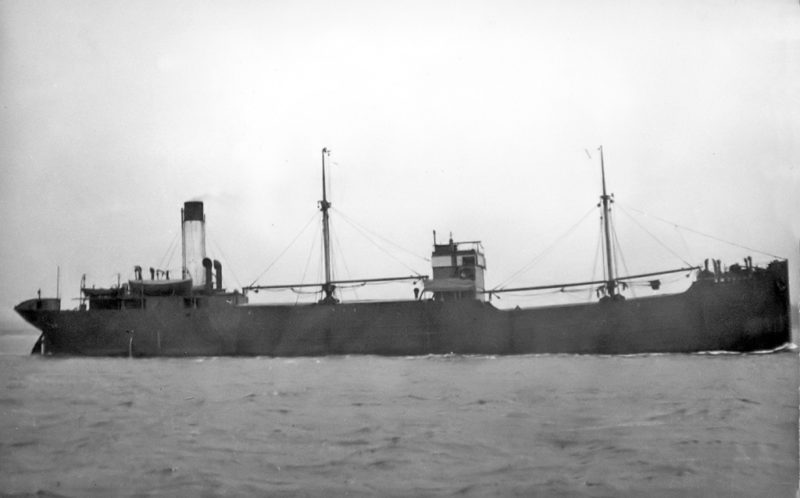
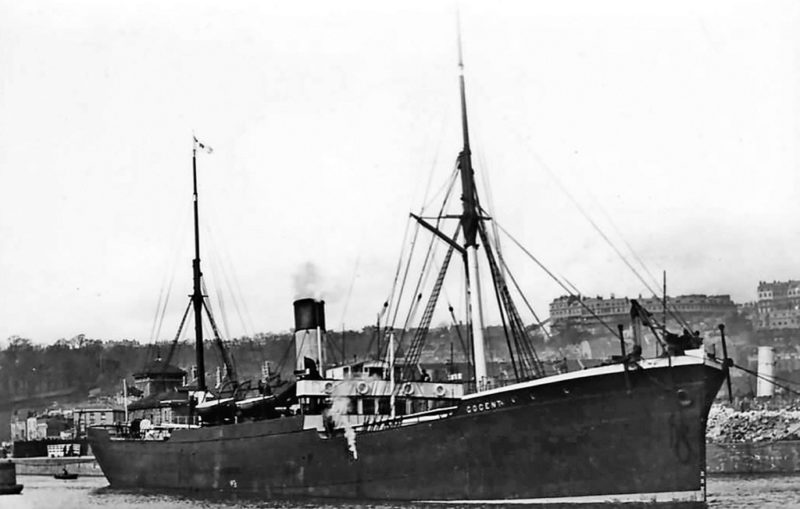
WESTOLL LINE
The Westoll family of shipowners came to prominence in Sunderland during the 19th century, and owned 64th shares in many sailing ships with other citizens completing the long list of part owners of the ship in terms of 64th shares. Thus, the Westoll family are more correctly described as shipbrokers and managing owners of sailing ships and steamers. George Westoll was the father of James Westoll (1829-1895), and grandfather to James Westoll (1860-1929), and all three men operated in this way. The 64th shares in sailing ships were majority owned by the Adamson family of Sunderland in the early 1860s, e.g. 36 shares to Adamson family members, and 28 shares to Westoll family members in Zealous of 292 grt built in 1863 and lost by fire in 1875, and in the similar Auburn, Advent and schooner Roecliff. James Westoll fixed these sailing ships to trade to the Caribbean, Mediterranean and the Black Sea, and then two steamers, Advance of 608 grt, built in 1864, and Natalian of 620 grt, built in 1865, were part owned until both were lost. Advance was launched at North Dock in Sunderland, and Natalian was built by George Haswell of Sunderland.
The steamer Advance began her career from Sunderland in the Baltic trade, but was in collision on 4th February 1870 with the steamer Ashford off Whitby, Ashford later sank. A few months later, Advance went missing while on a voyage from Gothenburg to London with oats, all 20 crew were lost. The steamer Natalian was homeward bound to Sunderland in December 1872, but had broken down off Whitby and was towed by the similarly part owned steamer Wear of 699 grt, built in 1865, until the tow parted near rocks off Hendon Dock in Sunderland and she grounded and broke up, the crew of 17 were rescued by rocket apparatus. The iron steamer United Service of 1,414 grt was owned by James Westoll from 1871 to 1895 and had dimensions of 262.5 feet by 30.2 feet by 20.0 feet.
Larger steamers were also owned on the 64th share principle, with three major shareholders in the forty six steam tramps built by Shorts of Sunderland for Westoll e.g. 20 shares owned by Westoll, 16 by the Adamson family, and eight by Shorts, with the remaining twenty shares taken up by prominent citizens of the city. The steamers were then named after members of the Westoll, Adamson and Short families e.g. James Westoll of 1,990 grt, William Adamson of 1,986 grt, and J. Y. Short of 2,217 grt in the mid 1880s. James Westoll sank after a collision off Dover on 3rd March 1911, while William Adamson was in collision with the big Messsageries Maritimes steamer Atlantique off Lisbon on 9th February 1903 and was later broken up with extensive damage. J. Y. Short stranded at Tunstall in Yorkshire in 1892 but was refloated and repaired at extensive cost. All ships needed full insurance to cover maritime calamities of all types e.g. steamers built in other shipbuilding centres fared no better with Alette of 2,796 grt built by William Gray at Hartlepool in 1896 but wrecked four years later.
The second James Westoll was educated at Edinburgh Royal High School and joined the firm in 1877. He married Lavinia Preston, born in 1866 as a daughter of the Mayor of Sunderland, in 1887 and they had one son, James born 1887, and two daughters Vera born 1888 and Dorothy born 1890. He purchased his country home at Coniscliffe House to the west of Darlington in the 1890s beside St. Edwin’s Church and the River Tees at High Coniscliffe, and it was staffed by four servants. The family continue to use two residences, Coniscliffe House, and another in Bishopwearmouth in Sunderland. The steam tramp Coniscliffe of 3,920 grt was built by Short Brothers in 1901, and another steam tramp was built in 1895 was named after his wife Lavinia, who is buried in a grave at High Coniscliffe Church after her death on 26th December 1945. James Westoll (2) had died on 4th August 1929 and his funeral took place three days later at Coniscliffe House. Lavinia moved to Tees View, High Coniscliffe, with the Hall taken over in World War II as a barracks and hospital for the Army. Careless lighted cigarettes thrown aside burned the Hall down to the ground. The later Westoll family have lived on the Graham Estate at Longtown in Cumbria on the river Esk to the present day.
The Pallion yard of Short Brothers built no less than forty six steam tramps for the Westoll family, starting with Tabor of 811 grt built in 1871, Thomas Parker of 1,152 grt built 1871, and many tramps with names ending in ‘ent’ e.g. Advent, Fervent, Ambient, Eident, Virent, Beneficent, Refulgent, Obedient, Cogent, Diligent, Gerent, Munificent, Salient, and Fulgent of 2,008 grt, the last to be built at the yard in 1910. Virent of 1,725 grt was completed in 1880, but after ten years of service she damaged her tail shaft at Sulina the Black Sea, and was towed with her cargo of grain by the steamer Trekieve until the tow parted and she was lost before she reached her destination of London. Diligent of 2,184 grt was completed by Shorts in 1888 but was sunk on 15th February 1904 near A Coruna in Galicia off North West Spain, and then raised to trade for another decade before she became a loss by collision off Hartland Point in Devon while on a voyage from Santander to Troon.
The Westoll fleet size reached forty tramps at the turn of the century, with the new tramp Roker sailing from Sunderland with a full cargo of coal for American ports under Capt. A. B. Taylor. The fleet then increased to 45 tramps by 1912, with 43 of them employed on the ‘Eternal Triangle’ route to the Black Sea for grain.
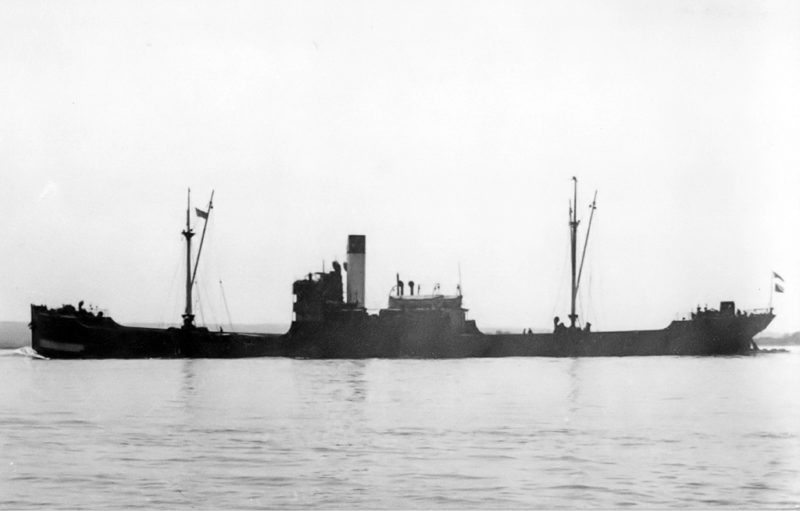
The tramp named after the country residence of James Westoll (2), Coniscliffe, cost £55,000 to build and made her maiden voyage on 26th January 1902 from the Tyne to Genoa with coal under the command of long time Westoll Master, Capt. Robert Eggleton, who died at Odessa later in 1902 while Coniscliffe was loading grain. She was then employed in the coal and salt trades of the Indian Ocean, and returned from Bombay to Hull in 1910. She was lost on 21st March 1912 when aground on Serpent’s Island at Sulina in the Black Sea at the mouth of the Danube while on a voyage from Port Said to Kherson to load grain.
A big fleet of tramps was being traded on the outbreak of World War I in August, and no fewer than twenty one of them were lost, with the Westoll fleet never really recovering from this colossal loss of seafarers and ships:-
Cogent – Interned at Hamburg in 1914 and served as a German collier during the war. Sold to Spanish owners in 1919 and renamed Tres Hermanos
May Scott – Interned at Hamburg in 1914 with her entire crew for the duration of the war and sold to Aldershot Steam Ship Co. Ltd. when recovered from Hamburg
Fulgent – Torpedoed and then sunk by bombs on 30th April 1915 by U-30 45 miles NW of the Skelligs while on a voyage from Cardiff to Scapa Flow with coal, 2 lost including Master
Lavinia Westoll – Mined and sunk on 28th March 1916 when 33 miles SSE of Spurn Head while on a voyage from Almeria to the Tees with iron ore. Mines laid by UC-6
Robert Adamson – Torpedoed and sunk on 10th April 1916 3 miles NE of Shipwash Light Vessel by UB-16 while on a voyage from Dundee to Le Havre with pitprops
J.Y. Short – Captured and sunk on 3rd October 1916 by U-43 in the Norwegian Arctic 80 miles East of Vardo while on a voyage from Penarth to Archangel with coal
Excellent – Shelled and sunk on 9th January 1917 by U-70 40 miles NE of Noup Head, Orkneys while on a voyage from Penarth to Lerwick with coal, Master taken prisoner
Lucent – Shelled and sunk on 12th February 1917 by UC-66 20 miles East of the Lizard while on a voyage from Cardiff to St. Malo with coal
F.D. Lambert – Mined and sunk in the English Channel on 13th February 1917 one mile east of the Royal Sovereign Light Vessel while on a voyage from the Tyne to Savona with coal
Okement – Torpedoed and sunk by U-64 on 17th February 1917 140 miles SSE of Malta while on a voyage from Barry with coal, 11 lost
Beneficent – Torpedoed and sunk on 24th February 1917 5 miles ENE of Hartlepool by UC-31 while on a voyage from the Tyne to Le Havre with coal, 3 lost
Munificent – Mined and sunk on 1st March 1917 3.5 miles NNW of Cape Gris Nez while on a voyage from the Tyne to Boulogne with coal, 5 lost
Westwick – Mined and sunk on 7th March 1917 one mile from Queenstown while on a voyage from Baltimore to Hull with maize. She sailed on her maiden voyage from Sunderland in November 1916 to the Plate to load grain for Gibraltar
Ambient – Mined and sunk on 12th March 1917 when 7 miles north of Shipwash Light Vessel while on a voyage from Sunderland to Dunkirk with coal
Lizzie Westoll – Torpedoed and sunk on 17th June 1917 120 miles WNW of Fastnet by UC-42 while on a voyage from Port Signa to Garston with magnesite ore
Fluent – Torpedoed and sunk on 20th July 1917 15 miles SW of Portland Bill by UC-65 while on a voyage from New York to London with oats and steel coils.
Nascent – Torpedoed and sunk on 25th August 1917 35 miles SW of Wolf Rock by UC-49 while on a voyage from Tegal (Java) and Dakar to Hull with sugar and general, 6 lost.
Robert Eggleton- Torpedoed and sunk in St. George’s Channel by U-91 on 28th December 1917 while on a voyage from the Clyde to Livorno with coal, 1 lost.– Torpedoed and sunk on 8th March 1918 4 miles NE of Seaham by UC-40, 1 lost.
T.R. Thompson – Torpedoed and sunk on 28th March 1918 7 miles south of Newhaven by UB-57 while on a voyage from Benisaf to the Tees with iron ore, 33 lost including Master.
Virent – Torpedoed and sunk on 24th August 1918 in St. George’s Channel 38 miles SW of The Smalls by UB-92 while on a voyage from Cartagena to the Clyde with iron ore.
In 1920, James Westoll (2) had a Head Office in Sunderland and a Branch Office in Newcastle to administer his fleet of ten tramps and colliers. These were the big shelterdecker Westhope built in April 1918 and sister of the war loss Westwick built in 1916, Aldworth of 5,250 dwt built in 1893, Gerent of 3,300 dwt built in 1888, Regent of 5,400 dwt built in 1903, Roker of 5,766 dwt built in 1898, the colliers Rudmore of 1,310 dwt built in 1911 and Sir Walter Scott of 2,200 dwt built in 1908, Salient of 6,100 dwt built in 1905, President of 3,100 dwt had been built in 1907 and had been interned in Germany in 1914 but was recovered at the end of the war and was sold in 1921 and repurchased three years later, and William Middleton of 3,850 dwt built in 1893.
President then stranded north of Eyemouth near St. Abbs Head on 24th April 1928 in fog, the crew scrambled ashore. William Middleton sailed from the Tyne under Capt. Stratford with 3,500 tonnes of coal for Stettin on 4th January 1924 but became trapped in ice for some time before being freed, and was sold to Italian owners in 1927 for further trading. Aldworth and Gerent were broken up in 1928, while Regent was sold for further trading to Latvian owners in the same year.
Roker was broken up in 1933 at Rosyth after 35 years of service to Westoll, Salient was broken up in 1936 at Blyth after thirty years of service to Westoll, the collier Rudmore was sold to T. H. Donking of Middlesbrough in 1937 without change of name, and the collier Sir Walter Scott was sold off at the same time. The big shelterdecker Westhope from the Pickersgill yard in Sunderland had dimensions of 405.0 feet by 52.3 feet by 31.9 feet, and was sold to Greek owners J. A. Coulothros and N. Embiricos of Piraeus and renamed Taygetos in 1935.
Westolls participated more fully in the East Coast U.K. coal trade from the Tyne and Sunderland after a series of engines aft and engines ‘midships design colliers was then completed in the later 1920s by the local collier builders S.P. Austin & Son Ltd. and William Pickersgill named Lys, Andelle, Westburn, Westavon, Westcove, Ament, Beneficent, together with the purchased collier Barmoor built in 1909 by the Gateshead yard of Wood, Skinner & Co. Ltd.
Ament had a very short career indeed, for she was launched at Southwick on 16th December 1929, completed a month later and then lost on the Long Sand at South Shields on 15th March 1930 while on a voyage to London with coal.
There were two owning companies in the inter-war years, Westoll Steamships Ltd. and the Westwick Steamship Co. Ltd. of 1916.
The colliers were able to trade with Tyne or Wear coal to London during the Depression with only short waits for cargo, while the shelterdecker Westhope voyaged worldwide in ballast, with her double bottoms, forepeak and aft peak full of ballast water, in order to load a cargo whose freight rates would cover her costs.
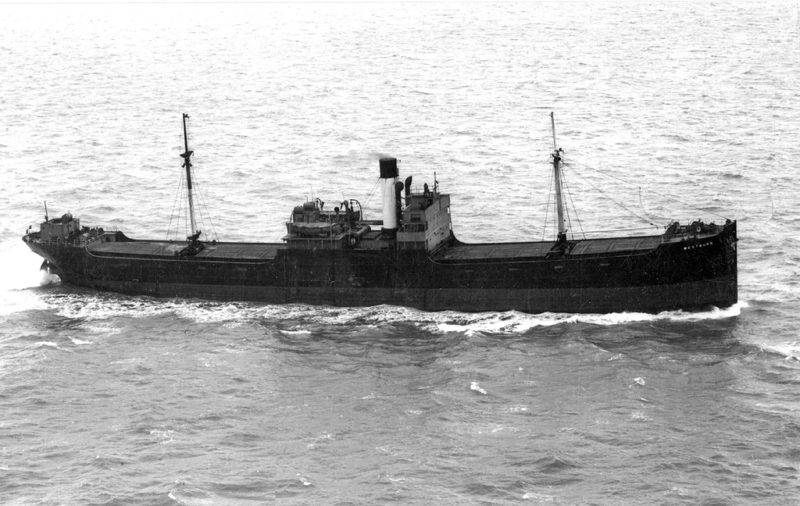
The white funnels with a black top of the remaining ships of the fleet were painted war time grey again in 1939, and three ships were lost to enemy action:-
Westcove – One of six block ships sunk at Dunkirk on 4th June 1940, she was built in 1912 and was previously Corcove and Cove in the Cory fleet, and was purchased by Westoll in 1927
Westavon – Mined and sunk on 30th May 1941 in the Barrow Deep while on a voyage from Hartlepool to London with 4,100 tons of coal, crew of 27 saved
Beneficent – Mined and sunk on 17th December 1940 about two miles off Southend while on a voyage from Sunderland to London with 4,200 tons of coal, 6 lost from crew of 21
Andelle was sold for breaking up in 1945 after a 23 year career, leaving only Westburn in the fleet, having survived a night time bombing on 13th June 1941 off Hartlepool with the loss of Capt. Kirkcaldy and five other crew members. She was repaired and was present at the Normandy Beaches on D-Day +2 under Capt. Wade. She became the very last ship in the big Westoll fleet in 1957 when she was transferred to the associate Vedra Shipping Co. Ltd., whose principal shareholder was J. Weston Adamson, the Adamson family having held large blocks of shares in Westoll ships for a century, and renamed Eldra, and was then sold off to Greek owners in December 1959.
The Westoll family also owned blocks of shares and served as directors of the local shipbuilders S.P. Austin & Son, Austin & Pickersgill Ltd., and in the South Shields ship repair yard of Middle Docks and Engineering Co. Ltd.
POSTSCRIPT
James Westoll during his 69 years of life until his death in 1929 was a very popular man in Sunderland, and owner of by far the biggest tramp fleet in the town, with a fleet of over one hundred ships owned by his family that spanned two centuries.
He gave much wealth away to various charitable causes, and was a local magistrate, and a member of the River Wear Commissioners and the local Pilotage Board.

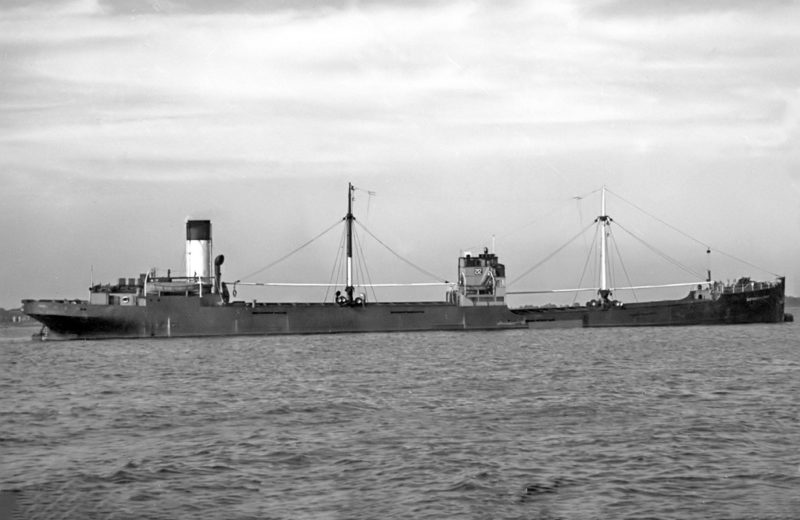
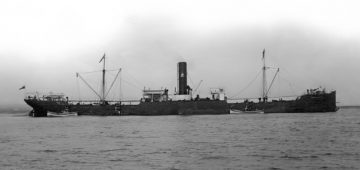



Comments
Sorry, comments are closed for this item